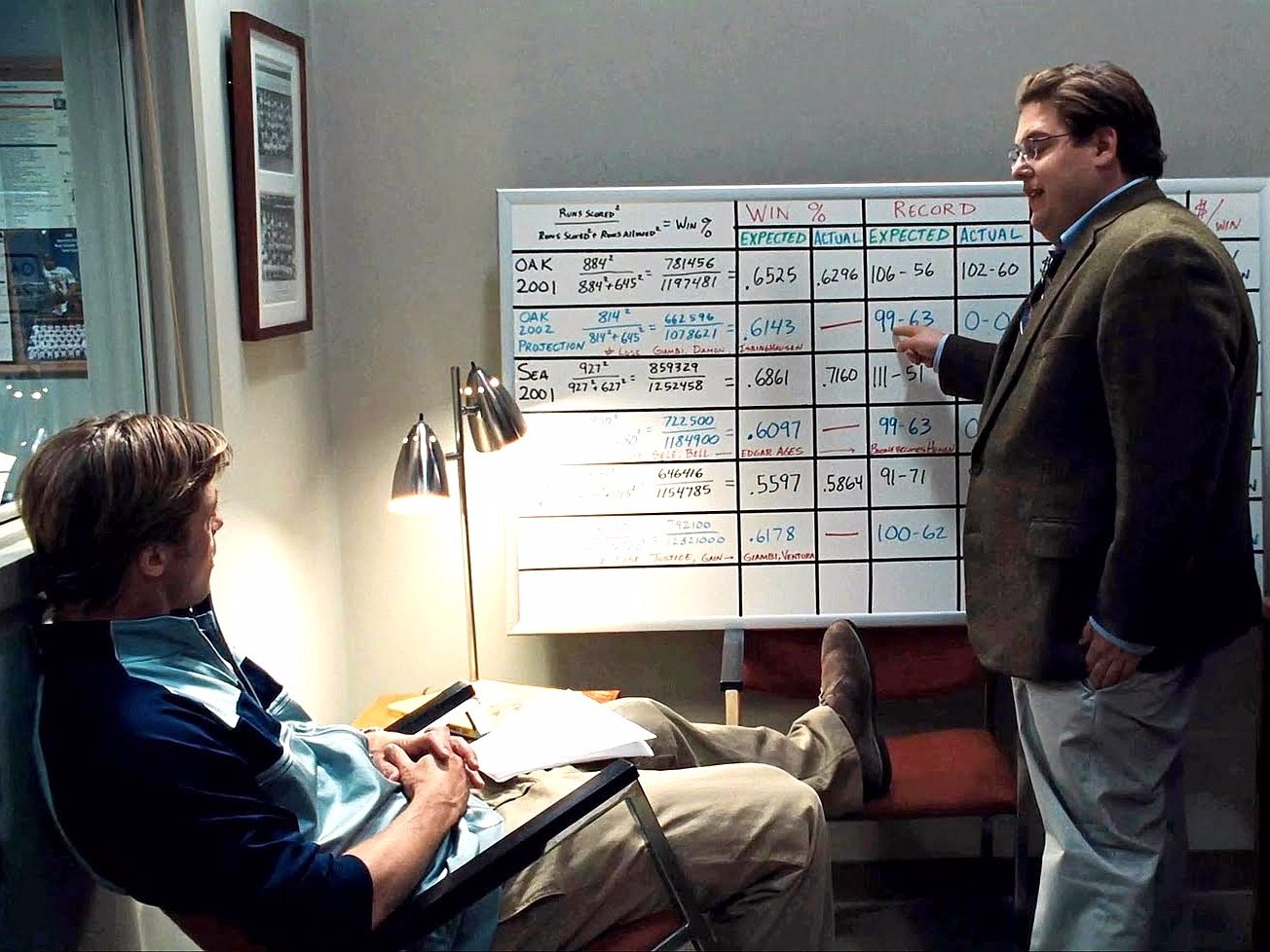What Educational Video Producers Can Learn From Moneyball
By Adam Noyes
 Taking risks in business is part of the game. If you don’t take risks then you can’t ever expect to achieve anything other than just meeting expectations or worse, falling short. “Taking risk” doesn’t necessarily mean doing something crazy or outlandish, but maybe something abnormal. Sometimes the risk being taken is a very well-calculated step to expand into a different market or just change the ways a company approaches things. That’s what the Oakland A’s did in the early 2000’s and their approach which literally changed the way baseball has been scouted, analyzed and played since. If you haven’t seen Moneyball or read the book then to quickly sum up, Oakland’s general manager was faced with a problem of fielding a competitive team with limited funds to do so. He had to think outside the box and luckily met statisticians and analyzers of the game who were able to find undervalued players that could benefit the team who also were inexpensive to acquire. Every team now employs an analytic’s team to go beyond just what scouts and coaches can see with their eyes. Liam Moran of StreamingMedia.com theorizes that a similar approach could be taken in our classrooms. Moran explains how helping teachers with visual aids such as video projects will reach children better in turn teaching them better. Unfortunately most teachers aren’t regular camera users or masters of streaming media at all so the idea would be to (like the A’s) look for undervalued media professionals that could create the content needed for the subjects needed. Such an idea would ease the competitive nature of the media world and would give valuable experience to those either in college or just starting out in the media field. If this idea benefits the future in teaching children more effectively, forgive the pun, but that sounds like a real hit.
Taking risks in business is part of the game. If you don’t take risks then you can’t ever expect to achieve anything other than just meeting expectations or worse, falling short. “Taking risk” doesn’t necessarily mean doing something crazy or outlandish, but maybe something abnormal. Sometimes the risk being taken is a very well-calculated step to expand into a different market or just change the ways a company approaches things. That’s what the Oakland A’s did in the early 2000’s and their approach which literally changed the way baseball has been scouted, analyzed and played since. If you haven’t seen Moneyball or read the book then to quickly sum up, Oakland’s general manager was faced with a problem of fielding a competitive team with limited funds to do so. He had to think outside the box and luckily met statisticians and analyzers of the game who were able to find undervalued players that could benefit the team who also were inexpensive to acquire. Every team now employs an analytic’s team to go beyond just what scouts and coaches can see with their eyes. Liam Moran of StreamingMedia.com theorizes that a similar approach could be taken in our classrooms. Moran explains how helping teachers with visual aids such as video projects will reach children better in turn teaching them better. Unfortunately most teachers aren’t regular camera users or masters of streaming media at all so the idea would be to (like the A’s) look for undervalued media professionals that could create the content needed for the subjects needed. Such an idea would ease the competitive nature of the media world and would give valuable experience to those either in college or just starting out in the media field. If this idea benefits the future in teaching children more effectively, forgive the pun, but that sounds like a real hit.
Can we adopt an unconventional perspective on educational video production and delivery to find opportunities that have thus far gone unmined? For both the Athletics and MLBAM, the unconventional perspective the disruptor adopted was obvious in retrospect, but simply outside of the consensus viewpoint.
If you were tasked with supporting teachers in educational video production, the conventional approach to staffing such a team would be to hire videographers with strong pedagogical design backgrounds. These skills are necessary, but an undervalued and overlooked skill in our roster construction is artistic design. Video is a visual medium: There is some value to showing a talking head, and great value in recording the teacher away from the classroom, out in their discipline’s natural environment. But not all visual aids can be photographed.
Collaborating with teachers to produce curricular art content is currently a niche skill and one very difficult to find advertised in job postings. With virtual and augmented reality on the rise, where so much more of the visual content is artificial and artistically produced, tomorrow’s top curricular video production shops will be fighting over experienced curricular artists….[continue reading]

